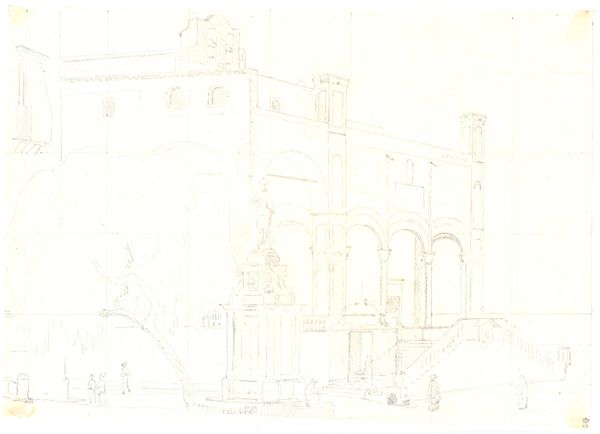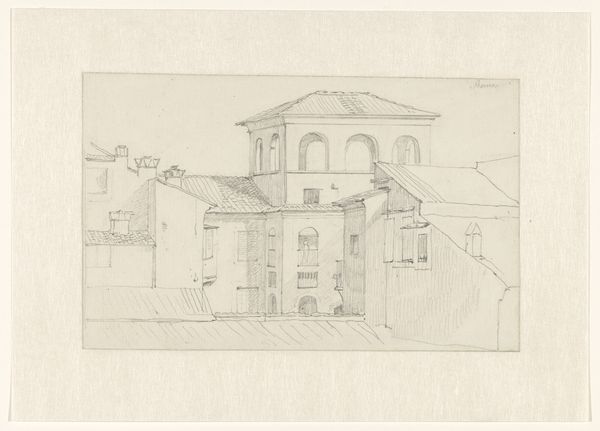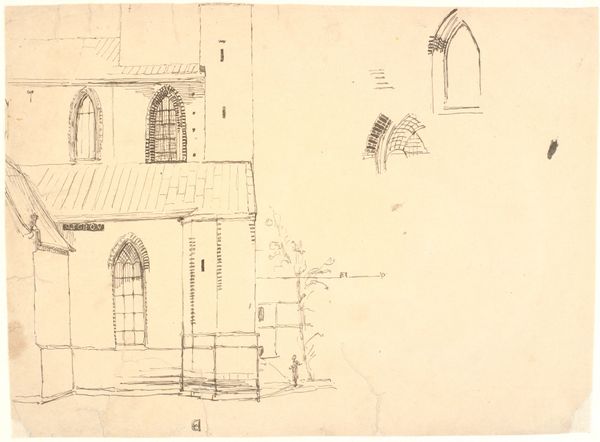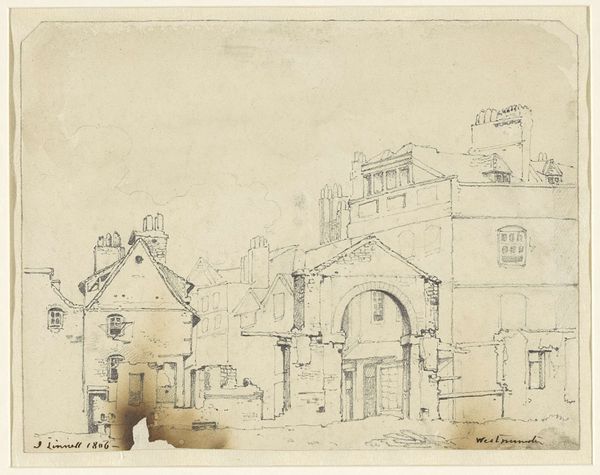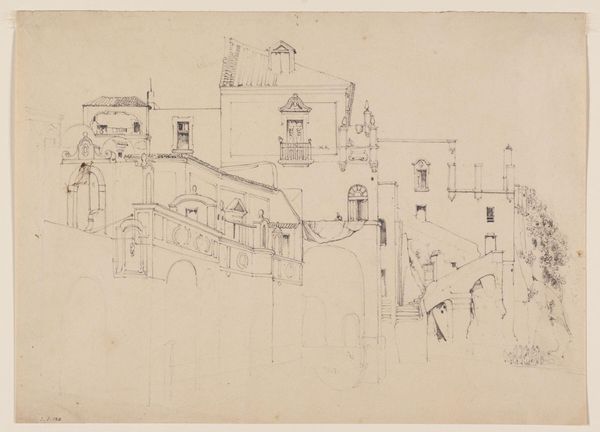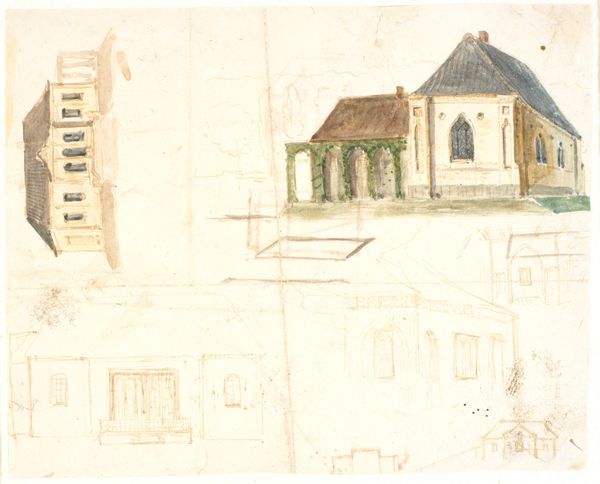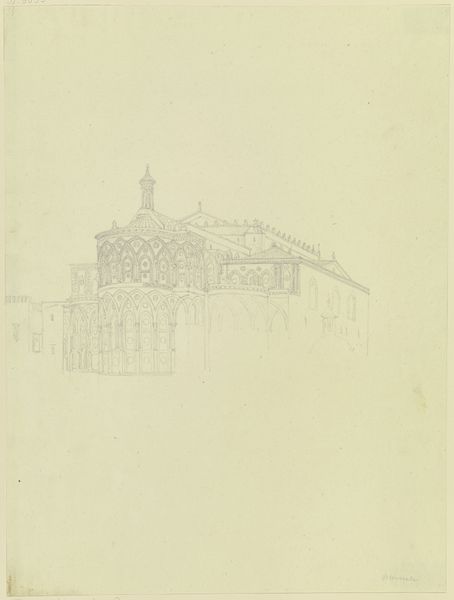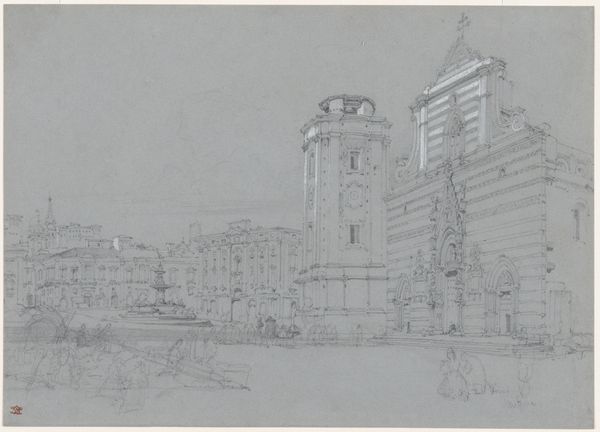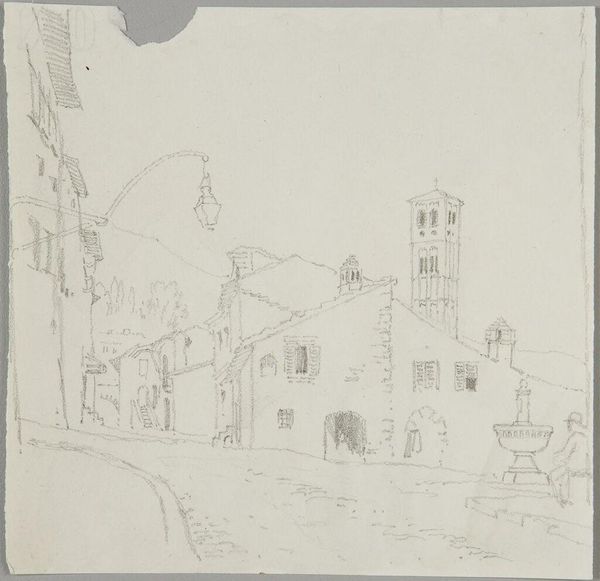
drawing, paper, pencil
#
drawing
#
landscape
#
classical-realism
#
etching
#
paper
#
pencil
#
cityscape
Dimensions: 200 mm (height) x 270 mm (width) (bladmaal)
Curator: This delicate pencil drawing from 1832 depicts the Bologna Cathedral. Ditlev Blunck, a Danish artist working in the classical-realist style, captured this Italian cityscape during his travels. It's currently held in the collection of the SMK, the National Gallery of Denmark. Editor: My first impression is one of incredible lightness. The delicate pencil lines create a sense of ethereality, as if the cathedral is almost emerging from the page rather than firmly planted on the ground. The subtle tonal variations add to the quiet, almost dreamlike atmosphere. Curator: It’s fascinating to see Bologna through the eyes of a Danish artist of this period. Blunck was part of a generation grappling with questions of national identity, often looking to classical ideals and historical settings like those found in Italy for inspiration and guidance. Italy, in many ways, stood as a source of European civilization during the period of Romantic nationalism. Editor: Absolutely. Looking at the composition, the artist seems to be concerned with the interplay of geometric forms – the rectangles and triangles of the architecture – creating a balanced, harmonious design. Semiotically, the image leans heavily into symbols of cultural power. Crosses abound, symbolizing institutional legitimacy. Curator: I think that framing also highlights Blunck's involvement within the art establishment in Copenhagen at that time. He exhibited actively, he taught…his art was a commodity but also an affirmation of bourgeois values that underpinned art production in 19th-century Europe. How do you see his position influencing his approach? Editor: His position must have had an impact on the choices he makes, yes. If we look again at the linear structure, Blunck outlines all shapes meticulously in great detail but for what, if not an understanding that art also consists of craftsmanship? The marks might imply so much. Curator: It also provides us insights to the architectural preservation movements in that moment in time. Consider that preservation efforts have always shaped our engagement with cultural heritage. The picture is evidence of Blunck's era and ideology. Editor: Precisely, and analyzing the forms can give us the first idea about ideology, the values behind Blunck's world. So even such subtle decisions about the composition and materiality ultimately contribute to how society regards monuments. I've gained new perspective. Thank you. Curator: My pleasure. Examining the relationship between art, artists and sociopolitical life helps us consider broader meanings.
Comments
No comments
Be the first to comment and join the conversation on the ultimate creative platform.
